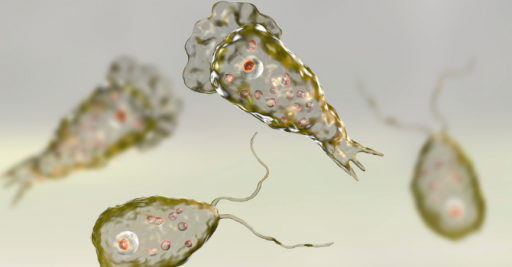Isobenzofuranones: novel therapeutic agents against amaeba Naegleria fowleri
Primary Amebic Encephalitis is an infection of the central nervous system (brain and spinal cord) that, although rare, is usually fatal. The infection is caused by Naegleria fowleri, a free-living type of amoeba present throughout planet Earth. Its habitat is hot or warm springs (it does not live in salt water), industrial wastewaters, and even water heaters at temperatures not exceeding 46 ºC. Pollution occurs when people swim in contaminated water and allow amoebae to access the nervous system through the nose. Once they reach the brain, they cause inflammation and tissue destruction, which can lead to death.
Treatment of this infection is usually based on the combined use of miltefosine (hexadecylphosphocholine) and an antibiotic and / or an antifungal drug. Although the potential benefits of this treatment outweigh the risk of its use, mainly in pregnant women, the development of new therapeutic agents against this disease remains a current challenge in this area of research. In this line, the team led by Dr. Tejedor Aragón and Dr. García-Tellado, from the research group Structure, Design and Molecular Function of the Institute of Natural Products and Agrobiology (CSIC), in collaboration with the team of the Institute of Tropical Diseases and Public Health de Canarias (ULL) led by Dr. Lorenzo-Morales and Dr. Piñero Barroso, have developed a research program focused on the search for new chemotypes with anti-Naegleria fowleri activity. To this end, a library of 14 molecules with isobenzofuranone backbone (see Figure) was tested against the parasite. Although there were precedents for antiprotozoal and antifungal activity associated with the isobenzofuranone nucleus, its activity against Naegleria fowleri had not been noted. The annotation was made by testing the induction of programmed cell death (apoptosis) in amoeba treated with the isobenzofuranone molecules QOET1-14. From the 14 isobenzofuranones synthesized, 8 showed anti-parasite activity and 3 induced programmed cell death in the treated amoebas (QOET1, QOET3 and QOET34; see figure for their structures). The results obtained in this study have made possible to locate a new pharmacological space (anti-parasite) in the chemical space of isobenzofuranones, and to add a new pharmacological annotation to these structures.

The results of this study have been published in the open access journal International Journal of Parasitology: Drugs and Drug Research.
A. Rizo-Liendo, I. Arberas-Jiménez, I. Sifaoui, D. Gkolfi, Y. Santana, L. Cotos, D. Tejedor, F. García-Tellado, J. E. Piñero, J. Lorenzo-Morales. The therapeutic potential of novel isobenzofuranones against Naegleria fowleri. Int. J. Parasitol-Drug 2021, 17, 139-149.
